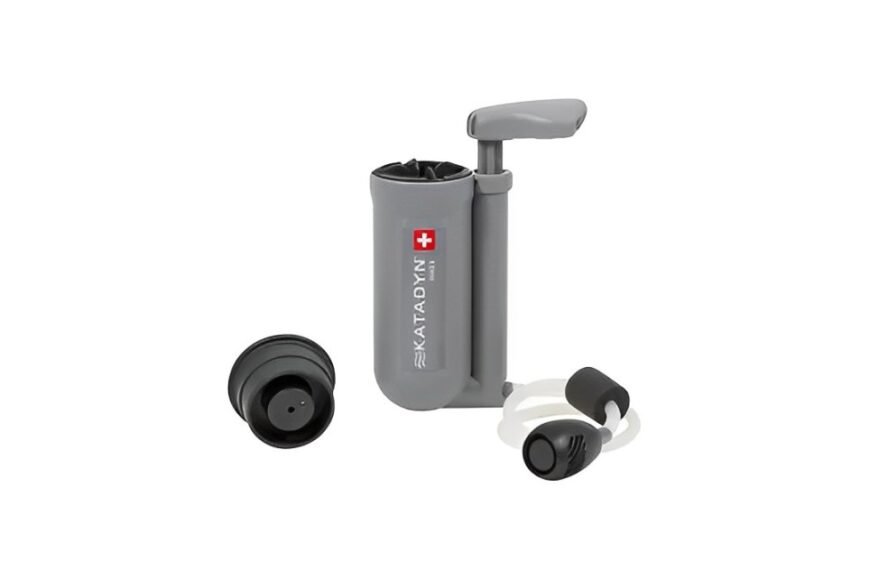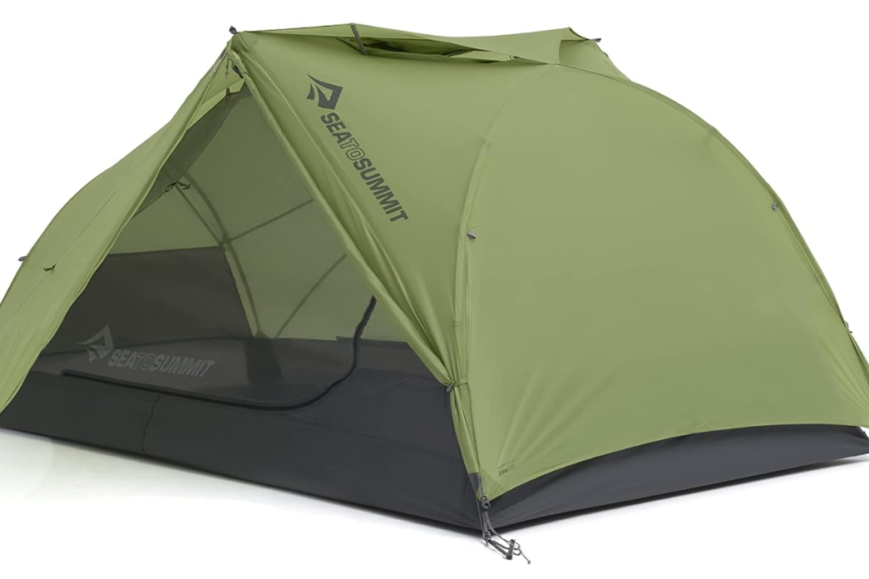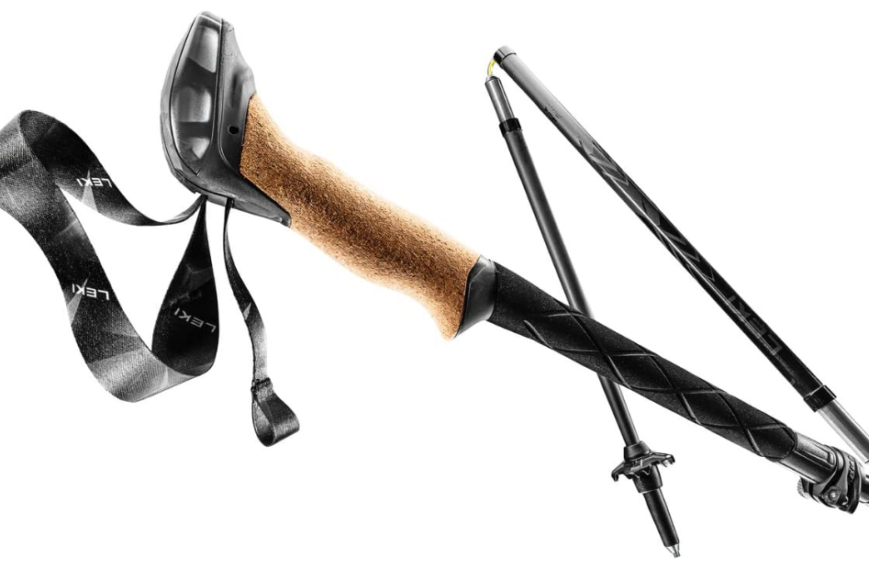TL;DR
- Key features for women’s hiking boots include ankle support, cushioned insoles, high ratings, arch support, and shock absorption.
- Waterproof, breathable materials keep feet dry and reduce blister risk, while lightweight boots facilitate longer treks.
- Eco-friendly and vegan-friendly boots benefit the environment, reduce resource use, and avoid animal cruelty.
- For fit, hiking boots should be slightly larger to accommodate thick socks and foot swell; remember to account for calf size.
- Performance is enhanced by energy return technology, specialized soles, and lightweight materials.
- Estrogenic grip soles are essential for stability on various terrains.
- Women’s hiking boots now offer both fashion and function, suitable for trails and everyday wear.
- Multi-trail boots should be light, rugged, and versatile, offering style without sacrificing performance.
- Post-adventure boot care requires cleaning and drying to extend their lifespan.
- Long-distance boots should provide firm ankle support, cushioned insoles, breathable fabric, and be lightweight.
- When shopping, use a checklist that includes fit, support, comfort, and traction; maintain them with regular cleaning and care.
Ladies, your feet deserve the best on the trail. Let’s talk about key features of women’s hiking boots. You want tough boots that hug your ankles and cuddle your arches, right? Think sturdy but soft, supportive but sleek. Whether you’re climbing mountains or strolling through valleys, the right boots make all the difference. Dive in for the essentials on choosing boots that won’t let you down. Ready to step up your hike game? Let’s march ahead!
What Are the Key Features to Look for in Women’s Hiking Boots?
When on the hunt for the ideal women’s hiking boots, aim for the pinnacle of quality that suits your specific needs. The “best” brand is subjective and should align with key factors such as comfort, fit, and support. Here’s how to enhance your selection process for a boot that offers both safety and enjoyment on your hiking endeavors.
Prioritize Ankle Support
Ankle support is non-negotiable. High-quality, sturdy boots with robust ankle support are your first line of defense against twists and sprains, ensuring safety on treacherous terrains. Look for boots that promise to stabilize your feet even on the most uneven trails.
Seek Cushioned Comfort
Comfort is paramount, and cushioned insoles are a game-changer for avid trekkers. Opt for boots that soften each step, reducing fatigue and offering relief on rocky paths. A cushioned insole is the secret to a more pleasant hike, especially on extended journeys.
Research Ratings and Reviews
Don’t overlook the importance of choosing from the best-rated women’s hiking boots. Those with consistent high ratings are likely to deliver on quality, comfort, and durability, indicating proven satisfaction among the hiking community.
Ensure Adequate Arch Support
Proper arch support in trekking boots is essential to prevent foot pain and maintain correct foot posture. This crucial feature helps to ward off overuse injuries by distributing weight evenly and reducing strain on your feet.
Look for Shock Absorption
Shock-absorbing features in women’s hiking shoes are a blessing for your joints. A boot that absorbs the impact with every step can make a significant difference in protecting your knees and hips, especially during long-distance hikes.
How Do Waterproof and Breathable Materials in Hiking Boots Benefit Female Hikers?
Selecting the right hiking boots is crucial for any female hiker, and the benefits of waterproof and breathable materials cannot be overstated. These boots are designed to maintain dryness, combating the common hiker’s plight of wet feet, which often leads to blisters and discomfort.
Understanding the Dual Functionality
The distinction between hiking shoes and more robust hiking boots lies in their enhanced support and suitability for challenging trails. Waterproof boots excel in keeping external moisture at bay, which is essential for traversing wet environments. However, their true value is in their breathability, a feature that allows internal moisture from sweat to escape. This dual-action technology ensures that feet remain dry from both external elements and internal perspiration, a feature often described as the “magic” of breathable materials in hiking footwear.
The Importance of Moisture Management
Effective moisture management is critical. Boots that only prevent water entry without allowing for ventilation would result in perpetually damp feet, akin to the discomfort of stepping in a puddle. Breathable fabrics address this by facilitating air circulation, which promotes quick drying. This attribute is especially beneficial for women’s hiking boots, ensuring that even on extended treks far from home, there is no lengthy wait for boots to dry out.
Balancing Protection and Weight
Comfort extends beyond moisture control. The weight of the boots is a significant factor, as heavier boots can lead to rapid leg fatigue. Women’s lightweight waterproof hiking boots strike the perfect balance — they keep feet protected against harsh weather conditions without the burden of extra weight, allowing hikers to enjoy longer trails with less fatigue.

Why Should Women Choose Eco-Friendly and Vegan-Friendly Hiking Boots?
Women seeking to combine their love for adventure with a commitment to sustainability should consider eco-friendly and vegan-friendly hiking boots. These boots represent a significant step forward for environmental conservation and animal welfare, while providing the necessary performance on the trails.
The Environmental Benefits of Eco-Conscious Footwear
Opting for eco-conscious hiking boots translates into numerous benefits for the planet. These materials generally require fewer natural resources like water and energy to produce, leading to a reduction in pollution and waste. By choosing boots crafted with the environment in mind, you leverage your purchasing power to support initiatives that promote cleaner air, water, and soil, and advocate for safer working conditions in manufacturing processes.
Vegan-Friendly: Compassionate and Performance-Driven
Vegan-friendly hiking boots forego leather and other animal-derived materials in favor of synthetics or plant-based alternatives. These choices are compassionate towards animals and often more sustainable for the environment. Moreover, advancements in material technology ensure that these vegan options do not compromise on trail performance, offering durability and comfort for the most rugged of adventures.
The Impact of Traditional Boot Production and the Alternative
The conventional production of women’s boots has tangible environmental costs, including deforestation, water pollution, and harm to wildlife, not to mention the intensive use of water, chemicals, and energy. However, the industry is witnessing a positive shift as more manufacturers adopt sustainable practices, creating long-lasting boots to minimize the frequency of replacement and, ultimately, consumer waste.
Sustainability in Longevity and Disposal
Eco-friendly boots are designed with the lifecycle in mind. They are made from materials that are more easily processed by nature at the end of their life, helping to diminish your ecological footprint. By supporting brands that prioritize sustainability, you encourage the industry to focus on long-term environmental health.
Making a Statement with Sustainable Choices
Your choice of hiking boots can serve as a powerful statement about your values. By selecting gear that aligns with eco-friendly and vegan standards, you signal to companies the importance of environmental stewardship and ethical practices. In doing so, your hiking gear becomes an extension of your principles, contributing to a healthier planet with every trail you conquer.

How Do I Select the Perfect Fit for My Hiking Boots?
Do hiking boots need to be a size bigger? Yes, hiking boots often need to be slightly larger. This allows space for thick socks and room for feet to swell a little on long hikes. Use the following tips to measure your foot size:
- Steps to measuring the correct boot size: Start by getting a piece of paper, a pen, and a ruler. Stand on the paper and mark where your longest toe ends. Measure to the chosen mark to know your foot size. Make sure you measure both feet; they might not be the same size!
- Seasonal considerations: For cold weather, you want boots that have room for thicker socks. Look for boots labeled as insulated. In regular conditions, a little extra room prevents blisters and discomfort.
- How calf fit affects boot selection and comfort: Many women have trouble with boots fitting tight around the calves. Look for boots with adjustable features, or designed specifically for women, which can offer a better calf fit.
Selecting a boot that fits well means more than just your foot size. Remember calf size, and how your feet can change on the trail. Happy feet mean happy hiking!
What Technologies Enhance the Performance of Women’s Hiking Boots?
In the realm of outdoor adventures, the performance of women’s hiking boots has been revolutionized by cutting-edge technologies. These advancements cater to the specific needs of female hikers, ensuring comfort, durability, and efficiency on the most challenging terrains.
Energy Return Technology: Propelling Every Step
A standout feature in modern hiking boots is energy return technology. This innovation captures the kinetic energy from your stride and recycles it to propel you forward. It’s akin to having a trampoline under your feet, providing a noticeable boost that reduces fatigue. This is a game-changer for those who revel in long-distance treks, as it allows hikers to go further with less exertion.
Tailored Fit and Smart Connectivity
The evolution of women’s hiking boots has led to designs that are not only lighter but also smarter. Customization is key, with boots being engineered to conform precisely to the unique contours of women’s feet. This personalized fit enhances comfort and support, critical factors for long hikes.
Moreover, some of the latest boots boast integration with mobile technology. Imagine boots that communicate with your smartphone, offering real-time tracking and data analysis of your hike. This feature acts as a digital companion, enhancing your connection with the trail.
Foot Health and Protective Soles
Technological advancements also prioritize foot health, with soles designed to prevent common issues such as blisters. If you’re someone who spends consecutive days traversing rugged landscapes, these innovations are a revelation. The right pair of boots can now effectively mitigate foot soreness, transforming your outdoor experience.
The Role of Technology in Hiking Safety and Enjoyment
It’s essential to recognize that these technological integrations are not mere gimmicks; they play a pivotal role in enhancing hiking safety and enjoyment. When searching for your next pair of boots, consider the technologies that work tirelessly to support your feet. Quality boots equipped with these features can significantly improve your hiking performance.
How Important Is the Sole Design in Women’s Hiking Boots?
Understanding the pivotal role of sole design in women’s hiking boots is essential for every adventurous spirit aiming for trail mastery. Indeed, advanced estrogenic grip soles are at the heart of trail stability and safety, providing unwavering traction on unpredictable surfaces.
Estrogenic Grip Soles: Engineered for Trail Mastery
The estrogenic grip technology, specifically tailored for women’s hiking boots, ensures a hiker remains firmly planted on both slick and crumbly terrain. These soles are thoughtfully designed to accommodate the distinctive patterns of a woman’s stride and weight distribution, making them a crucial component for a secure hiking experience.
Outsole Design: The Critical Difference in Hiking
A well-crafted outsole is the thin line between a triumphant day on the trails and an unwelcome misstep. The design of the outsole is a crucial factor—it must offer relentless adherence to various surfaces, from dry stones to damp roots, providing confidence with every step. Your boots should be as reliable as a trusted companion, ready to support you through thick and thin.
Hiking Boots vs. Approach Shoes: A Distinctive Comparison
While approach shoes and hiking boots share similarities, they serve different purposes. Approach shoes boast a stickier grip, adapting closely to rock surfaces, making them ideal for climbers navigating to their climb site. However, for the endurance of longer hikes, women’s hiking boots take the lead. Their soles strike a perfect balance between tenacious grip and lasting durability, coupled with ample cushioning to support extended treks.
The Foundation of a Successful Hike: Trustworthy Soles
As you gear up to conquer a rugged mountain trail, recognize that the soles of your boots are the bedrock of your hiking performance. Much like a well-built home relies on a sturdy foundation, a successful hike depends on the quality of your boots’ soles. Investing in boots with well-designed soles equips you with a secret arsenal, empowering you to tackle any terrain with ease.
Can Hiking Boots Be Both Fashionable and Functional for Women?
In today’s dynamic fashion landscape, women’s hiking boots have transcended their purely utilitarian origins. They now strike an impressive balance between high fashion and high function, making them a versatile choice for both adventurous outings and daily wear.
A Harmony of Style and Performance
Women no longer have to choose between aesthetics and practicality when it comes to hiking boots. The footwear industry has embraced the challenge of marrying rugged functionality with contemporary style. The result is a range of boots that can effortlessly withstand the rigors of challenging trails while maintaining a stylish edge.
The Allure of Modern Hiking Boots
These boots are not just designed with durability in mind; they also feature supportive structures that cradle the feet, ensuring comfort during extended periods of wear. On top of that, they’re adorned with eye-catching colors and modern patterns. This fusion of style elements means these boots pair seamlessly with both specialized hiking attire and everyday fashion ensembles.
Comfort Without Compromise
Comfort is a non-negotiable aspect of footwear, and the modern hiking boot does not disappoint. Enhanced with plush cushioning and designed for prolonged wear, these boots facilitate an active lifestyle without causing foot fatigue. The integration of comfort-focused features ensures that your feet feel as good at the end of the day as they did at the start.
The Ultimate Footwear Choice for Women
Today’s woman can confidently navigate both nature’s pathways and city streets with boots that encapsulate both fashion-forward design and functional prowess. Women’s hiking boots have become a testament to the idea that practical footwear can also make a bold fashion statement.
What Should Women Consider When Buying Boots for Multiple Trail Types?
When preparing for an adventure across varied terrains, the boots you choose are crucial to your hiking experience. Women in search of the perfect hiking boots should prioritize a lightweight design, versatility, and a balance of style and functionality.
Embrace Lightweight Durability for Trail Versatility
For those who dream of conquering multiple trail types, the importance of lightweight hiking boots cannot be overstated. The lighter the boot, the easier your journey across different landscapes. This reduction in weight helps prevent fatigue and allows for agile movement, giving you the freedom to explore further with less effort.
The Quintessential Need for Lightweight Boots in Backpacking
Backpacking enthusiasts understand that every ounce counts. Lightweight boots are indispensable as they enable hikers to traverse more miles without feeling weighed down. Embracing a ‘more joy with less work’ philosophy, the right boots can significantly enhance your backpacking pleasure.
Versatility: Your Boots’ Superpower
Trails are unpredictable, presenting a mix of rocky ascents, muddy flats, or unexpected snow patches. Boots that adapt to a broad spectrum of conditions are indeed priceless. Search for soles that promise excellent traction and durability to withstand constant use. Versatility isn’t just a feature—it’s a necessity for the well-prepared hiker.
Marrying Style with Trail-Readiness
Wondering if you can remain fashionable while tackling tough trails? Absolutely. The market offers a variety of women’s hiking boots that don’t compromise on style. Look for designs that reflect your personal fashion sense while offering the robustness required for outdoor endeavors.
The Ultimate Hiking Boot Checklist
For your next trek, prioritize lightweight and versatile boots that don’t sacrifice function for fashion. Before making a purchase, always try the boots on to ensure a perfect fit. Your feet will express their gratitude after a demanding day of exploration.
How to Take Care of Women’s Hiking Boots Post-Adventure?
After your hike, clean your boots right away. Get rid of any dirt. Pull out the insoles and laces. Wash the boots with mild soap and water. Air dry them away from direct heat. Store in a cool, dry place.
Why is this post-hike cleanup so critical? Dirt and grime can break down the materials of your boots, especially if they’re there for a long time. By cleaning your boots, you help ensure they last longer. Sustainability is key in the hiking boot industry, and proper care extends the life of your boots, reducing waste and helping you avoid the need to buy new ones too soon.
Regular care matters. Here’s why. It keeps your boots in top shape for your next adventure. Good care also means your boots will be ready to support and protect your feet on all future treks.
Here’s a step-by-step guide to keep them great:
- Knock off loose dirt.
- Remove insoles and laces.
- Rinse boots with cool water.
- Gently scrub with a soft brush and mild soap.
- Rinse again and air dry.
- Store in a place that’s not too hot or cold.
By following these steps after each hike, you’re not just cleaning your boots. You’re also giving them a chance to serve you on many more trails to come. Remember to keep them dry and cool until your next hike. This way, they’ll stay comfy and ready for action. Happy trails and happy boots!
Essentials for Long-Distance Hiking Boots: Support and Comfort
Embarking on long-distance treks requires hiking boots that offer unparalleled support and comfort. For women who take on extended journeys, selecting the right boots is critical to ensure both endurance and enjoyment.
Prioritize Superior Ankle Support and Fit
When choosing female-specific hiking boots for long distances, prioritize a design that provides exceptional ankle support. This entails boots that offer a firm grip around the ankles combined with a snug, tailored fit. Supportive insoles are non-negotiable, as they cradle the arch of your feet, reducing the risk of pain during extensive hikes. The ideal boots strike a delicate balance between offering support and allowing natural foot movement.
The Importance of Sole Comfort
Sole comfort is a vital consideration for women’s day hiking boots. The outsole should be designed to absorb the shock from rocky and uneven terrain, cushioning your feet throughout the day. Seek boots that boast thick, soft insoles and ample padding, especially around the ankle area, to ensure sustained comfort for hours on end.
Insole Support: A Key to Long-Haul Comfort
Proper insole support is the cornerstone of comfort for long-distance walking. Quality insoles contribute to foot stability and can prevent fatigue and injury. Customizing your boots by replacing factory insoles with ones tailored to your foot shape is a wise and beneficial strategy.
Special Comfort Features for Day Hikes
Women’s boots for day-long hikes should incorporate specific comfort-oriented features. Opt for boots that offer a degree of flexibility, allowing for a natural gait cycle. Breathable boots are also advantageous, keeping feet cool and minimizing perspiration. Additionally, lightweight boots can significantly reduce leg exhaustion, making your hike more enjoyable.
Conclusion
We’ve covered what makes women’s hiking boots stand out: ankle and arch support, cushion comfort, and the best fit. We explored how tech enhances performance and how sole design helps on trails. We also looked at eco-friendly options, trendy yet practical designs, and after-hike care. Remember, the right boots take your outdoor adventure from good to great. Stay safe and enjoy the trails!
![]()






